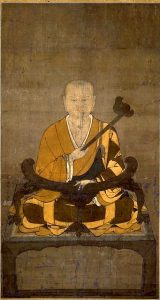
Take a moment to answer this question: “Who is the best person I know who will help me find release from suffering?” Now, expand your answer from the best person to your top three. Did you include yourself on the list? If so, great. If not, I urge you to reconsider! You have the ability to be one of your own best resources. Others will be part of your journey, but it is in your best interest to be your own best friend. With that thought in mind, let’s consider how you can offer yourself support as you deal with death and grief.
1) Acknowledge your discomfort
Perhaps one of the best ways to help yourself become comfortable with death and grief is to recognize that you are not comfortable with death and grief. And do you know what this means? It means that you are normal. Acknowledging your discomfort is the first step toward decreasing the suffering you feel as you grapple with your fear of death, your fear of losing your loved ones, and your own demise.
2) Do what makes sense
In times of your own suffering, remember to be your own best friend. Don’t think that you’re doing something wrong. Don’t beat yourself up over what you’re not doing. I am reminded of a discussion I had with Noel Alumit on the very first episode of the Death Dhamma Podcast.
Noel told me of how, during the AIDS pandemic, he and other volunteers were chastised for assembling safer-sex kits. Their director rebuked them, stating that they should have spent their time differently. The staff therapist stepped in and advised the director that what they were doing was good for their mental health. They were together and having this communal experience of doing something proactive. The repetitive nature of the task helped them process the grief and trauma that they were experiencing.
3) It’s OK to just be
Another kernel of wisdom that Noel shared with me was the idea that “we are human beings, not human doings.” This was particularly impactful to me as a person who’s always trying to run around being productive. During difficult times, I may seek to relieve my suffering by keeping busy. In the spirit of self-compassion, I accept myself for who I am. Still, it doesn’t hurt me to remember that I’m also a being, not a doing. When you’re going through grief, it’s okay to be and not to worry about how much you do. You will do once you give yourself time to be.
4) Pay attention to your internal dialogue
As you feel grief or fear death, think about how you are expressing yourself, whether through your internal dialogue or in your communications with others. The thoughts you repeat in your head are creating a lasting narrative. And that lasting narrative might tie you further to your own suffering. Last year, I met a man who had lost his partner. She stayed home from work ill and died suddenly and unexpectedly from an aneurism. A decade later he referred to this as “the tragedy.” Understandably, he loved her so much, that her loss was tragic. Timber Hawkeye told me the story of a man who spoke of going through a painful, traumatic divorce. By teaching this man to restate his story, this time without the adjectives, he showed him how to drop the suffering he was carrying around with him. During your difficult times, be aware of the language you use. Be mindful of how you are describing your experience. I will always admire my father for his perspective on his terminal cancer diagnosis. He said, “I never ask ‘why me?’ Instead, I realize, ‘why not me?’”
5) Practice acceptance and gratitude
When Mary Stancavage needs an immediate way to accept or to intercept painful emotions, she uses this mantra: “Right now, it is like this.” This helps her to pause and consider what is happening right now in her body and in her mind, and to accept that whatever she’s feeling is okay.
Once you accept your current state, you can access your gratitude practice.
I remember trying to figure out the benefits of having the two people who were closest to me die within a week of each other. The answer came to me as people asked how I was doing. And I would reply, “I am as well positioned as possible in a difficult situation.” This was true. I had a roof over my head, food on the table, and I had other people who cared about me. I had some degree of security. And I didn’t have to make big life-changing decisions. The more I looked for things to be grateful for, the more I found. Each day, I challenged myself to come up with three things for which I was grateful. Some days were really difficult. But it was possible to find three things every day, even if on some days I needed to repeat a list from a previous day. This was an exercise in not turning off my sorrow, not turning off my grief, but in bringing myself to accept some gratitude—in turn, helping me to renew and to restore, and providing me some relief from the grief.
6) Go back to the basics
In a discussion on helpful teachings, one of the first things that Venerable De Hong said was, “Go back to the Four Noble Truths.” He also reminded me of the five recollections; remember, “I am of the nature to die, there is no way to escape death.” These passages, along with the Maraṇasati Sutta or mindfulness of death, can be used to remind us of the truth of suffering, the truth of impermanence, and the fact that death is normal and unavoidable.
We will get sick. We will lose things. Our physical and mental state will change. And that understanding isn’t intended to bring us more suffering. It is actually intended to help us to come to terms or to peace with what will happen to us. We don’t want to be pessimistic, but we do want to be realistic. And in this realism, we will find strength—strength that we find by relying on the teachings, and our Buddhist community, and our practice.
7) Practice consistently
You cannot go back and change the past. You cannot control the future. In this moment you can be consistent in your practice. When a Sri Lankan monk once said to a group of us, “Be happy and do good and be good, as much as you can. And that is the best way for you to be happy all the time,” the monk was not advocating hedonism. He was reminding us to be consistent in our practice. He knew this would bring us peace. Consistent and faithful practice will help you to remain calm. And that peace will help you to be your own your own best resource in your release from suffering.
See more
Margaret Meloni: Death Dhamma
The Death Dhamma Podcast (Margaret Meloni)
Related features from BDG
Dancing around Death: Meeting Denial with Courage and Compassion
Unlocking Wisdom through Life Reviews
Four Steps to Help You Accept the Death of Old Ideas
Related videos from BDG
The Death Dhamma Podcast Season 1
The Death Dhamma Podcast Season 2
The Death Dhamma Podcast Season 3
The Death Dhamma Podcast Season 4












